
Energy labelling and ecodesign requirements apply to this product.
Professional refrigeration (PF) includes refrigerators, chillers and freezers that are used and/or accessed by professionals in non-household environments. Their only purpose is to preserve goods or cool processes, as opposed to refrigeration products with direct sales function that also have a display and consumer access function.
The 2015 Ecodesign regulation applies to three PF appliance groups: storage cabinets, condensing units, and process chillers. Storage cabinets also have Energy Labelling.
Blast cabinets (used to quickly cool or freeze hot food) are subject to information requirements only, while Walk-in cold rooms are not regulated, so these two PF types do not appear in EIA.
Source: estimations from the Ecodesign Impact Accounting Overview Report 2024
Scope
The following table shows some examples of products in scope and out of scope in the Ecodesign Regulation:
| In Scope | Out of Scope |
|---|---|
|
|
Check the complete list in the Ecodesign Regulation and the Energy Labelling Regulation.
Ecodesign Requirements
Ecodesign requirements cover professional refrigerated storage cabinets, blast cabinets, condensing units and process chillers.
Energy Label
Energy Labelling requirements apply to electric mains-operated professional refrigerated storage cabinets sold from July 2016 onwards.
The European Product Registry for Energy Labelling (EPREL) offers more detailed information on models placed on the EU market. This can be accessed by scanning the QR code featured on the new energy labels.
| Understanding the Professional Refrigerated Storage Cabinet Energy Label | |
|---|---|
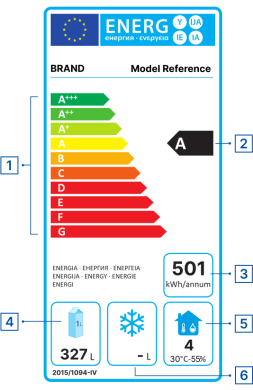 |
|
Highlights
In 2020, total EU27 electricity consumption by PFs was 118 TWh/a(of which 38 TWh/a for CUs already counted in other products). Without measures, this would have increased to 141 TWh/a in 2030 (45 TWh/a already counted) due to the increasing stock. Ecodesign and Energy Labelling measures are expected to lower this to 127 TWh/a in 2030 (41 TWh/a already counted). This is a saving of 10% or 14 TWh (of which 4 TWh for CUs already counted elsewhere).
Facts & Figures
This graphic shows the estimated sales, stock, energy consumption (primary, electric or fuel), greenhouse gas emissions, consumer expenses and business revenues for years 2010 and 2030. The estimated values inside the graph bars are those from the EIA ECO-scenario, they include the effects of Ecodesign and Energy Labelling measures.
The difference with the business as usual (BAU) scenario without these estimated measures is shown next to the graph bar. These figures indicate the estimated savings obtained due to the measures.
Product: Professional Refrigeration Measures: Regulation (EU) 2015/2095, Regulation (EU) 2015/1094 |
|---|
| The striped lines in the charts show the 'Effect of the Regulations' |
SALES (x1000 units) 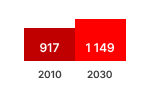 | STOCK (x1000 units) 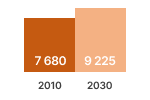 | Electricity (TWh/a) 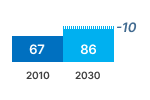 |
GHG-EMISSION 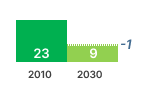 | CONSUMER EXPENSES 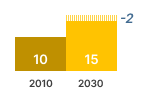 | REVENUES 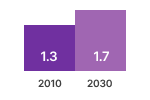 |
Source: estimations from the Ecodesign Impact Accounting Overview Report 2024
In 2020, 8 million professional refrigerators and freezers were in use in the EU27.
40% of these were storage cabinets (not accessible to the public), with a net cooled volume of 1.6 million m3, of which 29% frozen @-18°C and 71% chilled at +5°C.
59% are condensing units, removing a total of 130 TWh of heat. However, 60% of these units is sold with other commercial or professional refrigeration appliances, so there is a double counting issue.
The remaining 1% (95 thousand units in 2020) are large medium- or low-temperature process chillers, that remove a total of 113 TWh of heat.
The estimated effect of the 2015 regulations is a reduction of the average annual energy consumption of sold products (from 2020 onwards):
For storage cabinets
from 2.5 to 1.5 MWh/a (-40%)
For condensing units
from 13.2 to 12.1 MWh/a (-8.3%)
For process chillers
from 494 to 458 MWh/a (-7.3%)
The regulations saved 5.3 TWh of electricity in 2020, projected to increase to 14.1 TWh by 2030. This is a 10% saving due to Ecodesign and Energy Labelling measures.
The 2030 savings are 0.59% of the total EU27 electricity consumption in 2020, and close to the consumption of Estonia and Latvia together.
Due to the measures, EU27 users are forecasted to save € 2.6 billion on professional refrigeration in 2030 and in 2040. This is a saving of 10% compared to a scenario without measures.
Expected Savings
In 2020, the total EU27 electricity consumption for PFs was 118 TWh/a (of which 38 TWh/a for CUs already counted in other products). Without measures, this would have increased to 141 TWh/a in 2030 (45 TWh/a already counted) due to the increasing stock. Ecodesign and Energy Labelling measures are expected to lower this to 127 TWh/a in 2030 (41 TWh/a already counted). This is a saving of 10% or 14 TWh (of which 4 TWh for CUs already counted elsewhere).
The reduction in GHG emissions is 1.1 Mt CO2eq/a in 2030. PF-users will save €1.8 billion in 2030, due to lower electricity costs.
Total EU27 Annual Electricity Savings
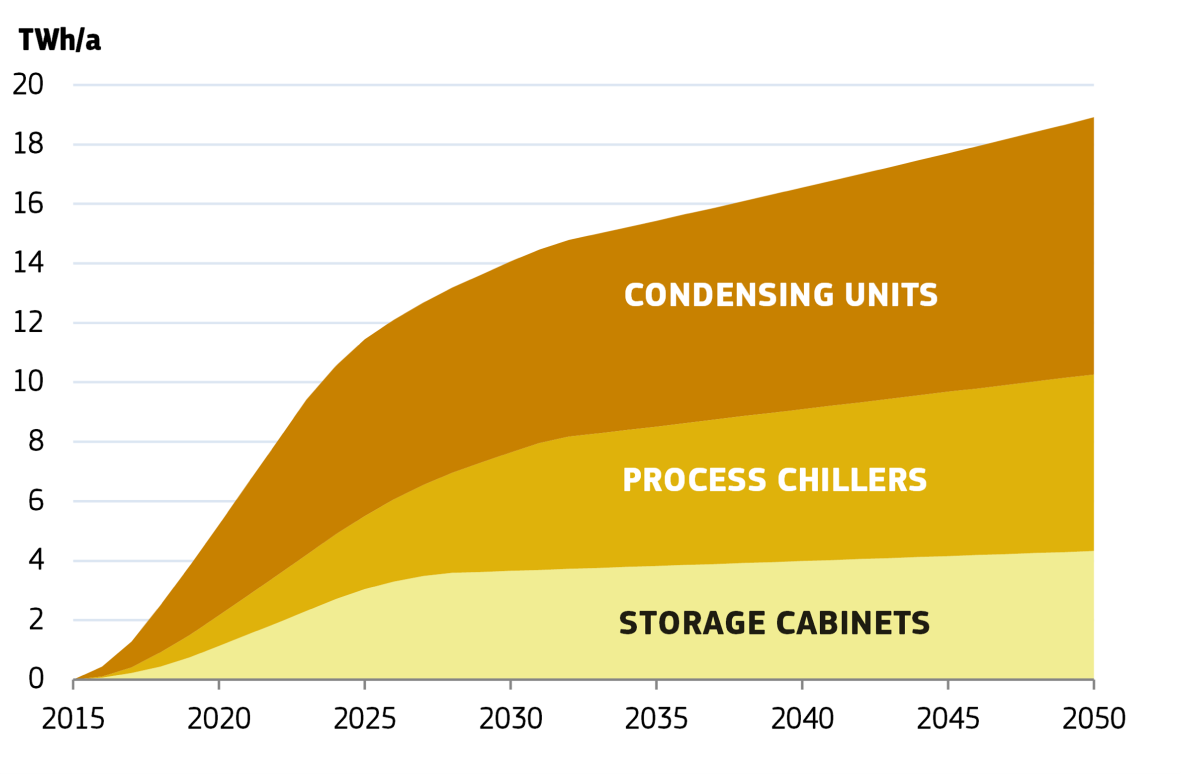
Source: estimations from the Ecodesign Impact Accounting Overview Report 2024

Suppliers
Suppliers should ensure that:
a) each refrigerating appliance has a printed label in the format set out in Annex III
b) the parameters of the product information sheet, set out in Annex V, and the content of the technical documentation (Annex VI) are uploaded into the product database
c) visual advertisements for a particular model contain the energy efficiency class and range of classes available in line with Annexes VII and VIII
d) technical promotional material, including on the internet, for a particular model describing its specific parameters includes the appliance’s energy efficiency class and the range of available classes according to Annex VII
e) dealers receive for each refrigerating appliance an electronic label in Annex III format and an electronic product information sheet as set out in Annex V;

Dealers
Dealers should ensure that :
a) each refrigerating appliance on sale, including at trade fairs, bears a clearly visible label provided by suppliers in line with Annex III
b) in the event of distance selling, the label and product information sheet comply with Annexes VII and VIII
c) visual advertisements, including on the internet, for a specific model contain the energy efficiency class and range of classes according to Annex VII
d) technical promotional material, including on the internet, for a particular model describing its specific parameters includes the appliance’s energy efficiency class and the range of available classes according to Annex VII;

Policy
Ongoing legislative work
Please check the ongoing initiatives on the Have your say portal. The review of these two Regulations is ongoing.
Commission Regulation (EU) 2015/1095 of 5 May 2015 implementing Directive 2009/125/EC of the European Parliament and of the Council with regard to Ecodesign requirements for professional refrigerated storage cabinets, blast cabinets, condensing units and process chillers.
Commission Delegated Regulation (EU) 2015/1094 of 5 May 2015 supplementing Directive 2010/30/EU of the European Parliament and of the Council with regard to the Energy Labelling of professional refrigerated storage cabinets.
Background
Directive 2009/125/EC establishes a framework to set Ecodesign requirements for energy-related products. It tasks the Commission to set these for products which are widely sold and traded in the EU and have a significant environmental impact. Regulation (EU) 2017/1369 establishes a framework to set Energy Labelling requirements for energy-related products to enable consumers to choose more efficient products to reduce their energy consumption.
For more information, see:
- Review of Ecodesign requirements for household cold appliances (European Commission).
Disclaimer: please pay attention to possible updates/changes as indicated in the Official Journal (green dot)
Useful Links
Regulation (EU) 2017/1369 of the European Parliament and of the Council of 4 July 2017 setting a framework for Energy Labelling and repealing Directive 2010/30/EU (OJ L 198, 28.7.2017, pp. 1-23)
Directive 2009/125/EC of the European Parliament and of the Council of 21 October 2009 establishing a framework for the setting of Ecodesign requirements for energy-related products (OJ L 285, 31.10.2009, pp. 10-35)
Standard review M/495 am.1 on methods of measurement for compliance checking
